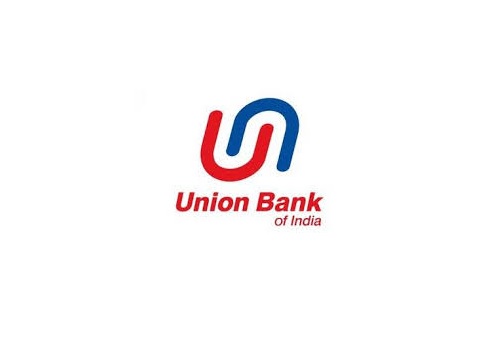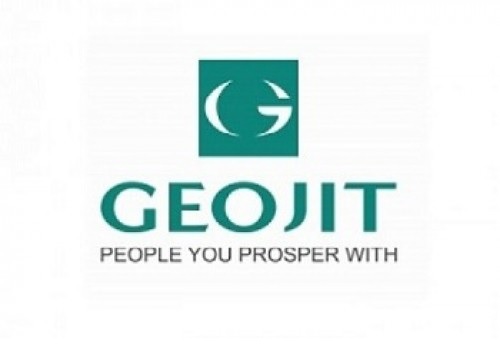Jeera trading range for the day is 18930-19550 - Kedia Advisory

Gold
Gold prices declined sharply by 2.38%, settling at 97,023, as markets reassessed the impact of the temporary ceasefire between Iran and Israel. While initial hopes for de-escalation had reduced the demand for safe-haven assets like gold, reports of renewed missile launches and military activity dampened optimism, leaving markets skeptical about the truce’s sustainability. The brief calm followed controlled retaliatory strikes between Iran and the US, which minimized collateral damage and led to short-term risk unwinding in gold positions. Adding to the pressure was Fed Chair Jerome Powell’s testimony before Congress, where he signaled no immediate urgency for rate cuts, despite acknowledging disinflation and a weakening labor market. The FOMC held interest rates steady at 4.25%–4.50% in June 2025 for the fourth consecutive meeting but reaffirmed expectations for two rate cuts later this year. Meanwhile, the Fed downgraded US GDP growth for 2025 to 1.4%, down from March’s projection of 1.7%. On the demand side, physical gold demand in India showed signs of improvement as domestic prices cooled, narrowing dealer discounts to $27/oz from $63/oz. In China, premiums declined due to subdued activity, while festive buying in India is expected to pick up from mid-August. Technically, gold is under long liquidation, with open interest down 9.22% to 13,422 lots. Key support lies at 96,025, with a break potentially testing 95,030, while resistance is seen at 98,410, and a move above could lead to a test of 99,800.
Trading Ideas:
* Gold trading range for the day is 95030-99800.
* Gold fell as markets assessed the sustainability of the ceasefire between Iran and Israel.
* Powell reiterates cautious stance on rate cuts in Congress testimony.
* Fed keeps interest rate steady at 4.25%–4.50% for fourth straight meeting.
Silver
Silver prices declined by 1.73%, settling at 104,917, as the announcement of a ceasefire between Israel and Iran reduced bullion's safe-haven appeal. The market reacted swiftly after US President Donald Trump confirmed a ceasefire and Iranian state media reported the final wave of missile attacks from Tehran, avoiding strikes on the Strait of Hormuz—a critical chokepoint for global trade and oil transport. This de-escalation eased fears of broader geopolitical disruptions and trimmed silver’s recent rally, which had pushed prices to 13-year highs amid strong safe-haven buying. Despite the pullback, silver’s medium-term fundamentals remain strong. The Silver Institute projects another significant global deficit in 2025, the fifth consecutive year of tight supply. Although total silver demand is expected to ease slightly by 1%, industrial demand—particularly from green energy and electronics—is projected to remain firm, with fabrication volumes surpassing 700 million ounces. Physical investment demand is also forecast to grow 3%, supported by renewed interest in Western markets. In contrast, jewelry demand, especially in India, may drop 6% due to high domestic prices, contributing to weaker retail consumption. The US current account deficit widened significantly to $450.2 billion in Q1 2025, and Fed Chair Jerome Powell reiterated caution on rate cuts, citing uncertainty from tariffs and inflation. Technically, the market is under long liquidation, with open interest down 18.67% to 10,136 lots. Immediate support is seen at 103,570, and a break below could test 102,215. On the upside, resistance is at 106,390, and a move higher could open the path to 107,855.
Trading Ideas:
* Silver trading range for the day is 102215-107855.
* Silver dropped after announcement of a ceasefire between Israel and Iran
* The US current account deficit widened by $138.2 billion, or 44.3%, to $450.2 billion in Q1 2025.
* Fed Chair Powell flags tariff-driven inflation risks, delays rate cut decision.
Crude oil
Crude oil prices plunged 7.66%, settling at 5,583, as markets reacted sharply to President Trump’s announcement of a ceasefire between Israel and Iran. The truce—though fragile—eased concerns about potential disruptions to oil flows through the Strait of Hormuz, a critical transit route for over 20% of the world’s oil supply. However, geopolitical risks persist, with Israel accusing Iran of breaching the agreement and threatening retaliation, which may keep risk premiums moderately elevated. On the supply front, the International Energy Agency (IEA) offered reassurance by noting its 1.2 billion barrels of emergency stockpiles and the availability of spare capacity from some OPEC+ members, which could be activated if needed. Meanwhile, U.S. crude inventories dropped sharply by 11.473 million barrels in the week ending June 13—the largest weekly draw in a year—suggesting stronger domestic demand or export activity. Inventories at Cushing, Oklahoma also declined by 995,000 barrels, though gasoline and distillate stocks rose, pointing to mixed signals in the refined fuels segment. Looking ahead, the IEA maintained its view that global oil demand will peak at 105.6 million barrels per day by 2029, even as China’s demand peaks in 2027. Technically, the market is witnessing fresh selling, with open interest rising 20.89% to 13,356 lots. Crude is finding support at 5,461, with further downside likely to test 5,340. On the upside, resistance lies at 5,754, and a break above may lead to 5,926.
Trading Ideas:
* Crudeoil trading range for the day is 5340-5926.
* Crude oil dropped followed President Trump's announcement of a ceasefire between Israel and Iran.
* The news eased concerns over potential oil supply disruptions and the closure of the Strait of Hormuz.
* IEA had previously reassured markets that it holds 1.2 billion barrels in emergency stockpiles
Natural gas
Natural gas prices fell sharply by 4.07%, settling at 316, amid rising production levels and forecasts suggesting that the current heatwave in the eastern U.S. may subside by early July. While hot weather recently spurred power demand and boosted prices, the prospect of milder conditions in the coming weeks has begun to weigh on market sentiment. Production remains a key driver of the downside pressure. According to LSEG, average gas output in the Lower 48 U.S. states increased to 105.5 billion cubic feet per day (bcfd) in June, up from 105.2 bcfd in May. However, it still lags the record high of 106.3 bcfd set in March, largely due to recent maintenance disruptions. Meanwhile, gas flows to LNG export terminals dropped to 14.1 bcfd in June from 15.0 bcfd in May, reflecting seasonal maintenance and dampening export demand. On the inventory front, U.S. utilities added 95 billion cubic feet of gas into storage for the week ending June 13, closely aligning with expectations and pushing total storage to 2.802 trillion cubic feet. Stocks remain 7.7% lower than a year ago but 6.1% above the five-year average, indicating a moderately comfortable supply situation. Technically, natural gas is under fresh selling pressure, with open interest rising 9.21% to 11,843 lots. Support is seen at 310.7, with further downside potential to 305.4, while resistance is at 325.1, and a move above could lead to 334.2.
Trading Ideas:
* Naturalgas trading range for the day is 305.4-334.2.
* Natural gas dropped as rising production and forecasts for an easing heat wave pressured prices.
* Average gas output in the Lower 48 states rose to 105.5 bcfd in June, up from 105.2 bcfd in May
* Gas flows to the eight major US LNG export plants fell to 14.1 bcfd in June from 15.0 bcfd in May, largely due to seasonal maintenance.
Copper
Copper prices declined by 0.74% to settle at 881.35, pressured by growing concerns over a potential destocking cycle in the U.S. despite some relief from geopolitical tensions following President Trump’s announcement of a ceasefire between Israel and Iran. One of the key drivers behind recent market tightness is the ongoing decline in copper inventories, particularly in LME-registered warehouses, which have dropped by 65% since mid-February, reaching 94,675 tons, their lowest since August 2023. Similarly, stocks monitored by the Shanghai Futures Exchange also fell by 1.1% from last Friday. These inventory outflows, along with large holdings of cash copper contracts and warrants, have pushed LME nearby contract premiums to their highest levels since October 2022. The "tom-next" spread soared to $48 per metric ton, compared to a $2 discount earlier this week, and the cash-to-three-month premium rose sharply to $180/ton from just $3 a month ago. Despite tight physical supply, the global refined copper market posted a surplus of 17,000 metric tons in March, down significantly from 180,000 tons in February, according to the ICSG. For Q1 2025, the market surplus stood at 289,000 tons. On the trade front, China's May imports of unwrought copper and products dropped 2.5% MoM and 16.9% YoY to 427,000 tons, while copper concentrate imports were down 18% MoM but up 5.8% YoY. Technically, the market is under fresh selling pressure, with open interest rising by 16.38% to 6,609 lots, indicating increased bearish activity. Copper now finds support at 878.2, with further downside to 874.9, while resistance is seen at 887.2, and a break above could take prices to 892.9.
Trading Ideas:
* Copper trading range for the day is 874.9-892.9.
* Copper prices fall on concerns of potential destocking cycle by U.S. firms.
* Trump’s Israel-Iran ceasefire announcement boosts market sentiment temporarily.
* LME copper stocks down 65% since Feb to 94,675 tons—lowest since Aug 2023.
Zinc
Zinc prices declined by 0.61% to settle at 254.15, primarily due to profit booking after recent gains driven by supply disruptions from smelters in South China, where heavy rainfall affected production. Despite the recent dip, downside remains capped due to a 5.7% weekly drop in zinc inventories at warehouses monitored by the Shanghai Futures Exchange, signaling tighter supply in the near term. However, upside momentum is being limited by persistent macroeconomic uncertainty. The fragile Israel-Iran ceasefire, dampened optimism over U.S.-China trade talks, and concerns surrounding weakening manufacturing demand in China continue to weigh on investor sentiment. Many Chinese buyers remain cautious, limiting zinc purchases to immediate needs amid sluggish domestic demand. On the production front, global supply dynamics show signs of constraint. Teck Resources’ Red Dog Mine, the world’s largest zinc mine, saw a 20% annual output drop in Q1, and Nyrstar, a major Australian smelter, announced a 25% output cut due to unviable ore treatment charges. The global zinc market surplus narrowed to 16,000 metric tons in April, down from 23,400 tons in March, reflecting tighter global supply. In China, refined zinc output in May fell 1% MoM and rose 2% YoY, with year-to-date production up only 0.5%, below expectations, as major regions dealt with both scheduled and unexpected smelter maintenance. Technically, zinc is under fresh selling pressure, with open interest rising 4.41% to 2,867, indicating renewed bearish sentiment. Immediate support lies at 253.2, with further downside at 252.1, while resistance is seen at 256.1, and a breakout above could test 257.9.
Trading Ideas:
* Zinc trading range for the day is 252.1-257.9.
* Zinc falls on profit booking after rain-hit South China smelter output boost
* Pressure seen amid mounting concerns over weakening demand in China, continued to weigh on sentiment.
* Zinc remains under pressure from weak manufacturing demand, particularly in China.
Aluminium
Aluminium prices declined by 1.14% to settle at 247.6, as markets reacted to geopolitical de-escalation following a ceasefire between Israel and Iran, which eased concerns over supply chain disruptions through the Strait of Hormuz. This drop in geopolitical risk also weighed on oil prices, reducing cost pressures for aluminium smelters and limiting the metal’s upside. Adding to bearish sentiment, aluminium stocks at Japan’s three major ports rose to 331,000 metric tons in May, up 3.3% month-on-month, indicating a build-up in supply. Meanwhile, U.S. physical market premiums fell over 7% amid speculation that tariffs on Canadian aluminium imports might be cut. Canada, supplying roughly half of U.S. aluminium needs, exported 3.2 million tons to the U.S. in 2024, and any easing in trade barriers could further enhance supply. On the global front, primary aluminium output in May rose 1.5% YoY to 6.245 million tonnes, according to the International Aluminium Institute. In China, production increased 5.0% YoY in May to 3.83 million tonnes, while year-to-date output was 18.59 million tonnes, up 4.0%. Exports in May rose 5.6% MoM to 547,000 tonnes, although they were down 3.2% YoY, reflecting mixed international demand trends. Technically, the market is under long liquidation, with open interest falling 1.77% to 3,672. Aluminium finds support at 246.3, with a breakdown possibly testing 244.9, while resistance is seen at 249, and a move above could push prices to 250.3.
Trading Ideas:
* Aluminium trading range for the day is 244.9-250.3.
* Aluminium dips as Iran-Israel ceasefire eases oil, Hormuz shipping threats
* China's imports of unwrought aluminium and aluminium products climbed 14.7% year-on-year in May
* Global aluminium output rises 1.5% year on year in May – IAI
Cottoncandy
Cottoncandy prices edged higher by 0.55% to close at 53,500, driven by short covering, despite an upward revision in India’s cotton production estimate. The Cotton Association of India (CAI) revised the production forecast slightly higher to 291.35 lakh bales from 291.30 lakh bales, primarily due to improved yields in Odisha. However, bearish undertones remain, with consumption estimates lowered by 8 lakh bales to 307 lakh bales, and exports revised down to 15 lakh bales for the 2024–25 season, significantly below the 28.36 lakh bales exported last year. Despite higher production, the rise in import volumes — already 27.5 lakh bales by April — is more than double last year's imports, indicating domestic supply tightness. Ending stocks are also expected to increase to 32.54 lakh bales, suggesting weakening domestic demand or stockpiling strategies. Globally, the USDA’s June WASDE report trimmed 2025–26 production estimates by over 800,000 bales, with cuts in India, the U.S., and Pakistan outweighing gains in China. Global consumption is forecasted lower by 300,000 bales, with declines in India, Bangladesh, and Turkiye, pushing global ending stocks down by 1.6 million bales to 76.80 million bales. In the U.S., adverse weather in the Delta has cut the harvested area and yield expectations, reducing the production estimate to 14 million bales, the second lowest in a decade. Technically, the market is in short covering mode, with open interest down by 6.15% to 61 lots. Immediate support is seen at 53,200, while resistance lies at 53,800, with a breakout possibly pushing prices further up.
Trading Ideas:
* Cottoncandy trading range for the day is 53490-53510.
* Cotton gained on short covering after prices dropped amid slight upward revision in India’s output estimate.
* CAI cut consumption forecast by 8 lakh bales to 307 lakh for the 2024–25 season.
* Cotton exports expected to fall to 15 lakh bales, down 13.36 lakh from last year.
# In Rajkot, a major spot market, the price ended at 25910 Rupees dropped by -0.29 percent.
Turmeric
Turmeric prices fell by 0.39% to settle at 14,332 as weak domestic and export demand weighed on sentiment, despite an uptick in arrivals. Market arrivals increased to 13,660 quintals from 11,940 quintals in the previous session, reflecting slightly higher availability. While the dry weather supports timely planting, preliminary indications suggest a 15–20% increase in acreage for 2024–25 due to limited profitability in competing crops. However, production may not rise proportionately, as untimely rainfall and disease concerns—particularly in Nanded—are expected to cut yields by 10–15%. Despite the acreage increasing to 3.30 lakh hectares, productivity concerns cap the upside. Robust trading activity continues in local mandis like Duggirala, where fresh turmeric is fetching higher premiums due to superior quality compared to older stock. Around 50–55% of the new crop has already been traded, and consistent arrivals are expected to keep the market active until the end of June. On the export front, India's turmeric shipments rose by 8.83% YoY to 176,325 tonnes in FY25, though March exports fell by 13.41% MoM. However, March also saw a 20.39% rise over February, indicating recovering overseas demand. Technically, the market is witnessing fresh selling, supported by a 0.26% increase in open interest to 17,525 lots, signaling continued speculative activity. Support is seen at 14,260, below which prices may test 14,190, while resistance lies at 14,450, with a breakout potentially leading to 14,570.
Trading Ideas:
* Turmeric trading range for the day is 14190-14570.
* Turmeric prices dropped due to weak domestic and export demand.
* Arrivals rose to 13,660 quintals vs. 11,940 in the previous session, indicating increased availability
* Turmeric exports during Apr - Mar 2025, jump by 8.83 percent at 176325.34 tonnes compared to Apr - Mar 2024.
* In Nizamabad, a major spot market, the price ended at 14415.15 Rupees gained by 0.05 percent.
Jeera
Jeera prices edged up by 0.55%, settling at 19,245, driven by short covering after earlier declines attributed to subdued domestic and export demand post the retail season. The conclusion of the retail buying cycle and sluggish participation from foreign buyers have dampened market sentiment. Traders note that ample supply and tepid export activity, alongside adequate carryover stocks, are contributing to the muted demand scenario. Despite a comfortable supply position, with approximately 20 lakh bags of jeera still held by farmers, only 3–4 lakh bags are expected to be traded by season-end, potentially leading to a carry-forward stock of around 16 lakh bags—an overhang that could weigh on prices. On the production side, output is expected to remain similar to last year due to favorable sowing and crop conditions. Although geopolitical issues in major producers like Syria, Turkey, and Afghanistan have impacted their export volumes, India has not seen a significant surge in demand to fill the gap. In terms of trade, jeera exports rose by 39.63% year-on-year to 212,502 tonnes in FY25. However, March 2025 exports dropped by 46.03% compared to the same month last year, indicating volatile overseas interest. Imports also fell sharply by 93.20% YoY, showing limited inbound demand. Technically, the market shows signs of short covering as open interest dropped by 1.56% to 6,432 lots, suggesting a pause in selling pressure. Jeera is finding support at 19,090, with potential to test 18,930 if breached. On the upside, resistance lies at 19,400, with further strength pushing prices to 19,550.
Trading Ideas:
* Jeera trading range for the day is 18930-19550.
* Jeera gained on short covering after prices dropped due to weak domestic and export demand.
* Ample existing stock and comfortable supply are dampening price prospects.
* Global supply disruptions haven't translated into higher Indian exports due to tepid demand.
* In Unjha, a major spot market, the price ended at 19680.4 Rupees dropped by -0.26 percent.
Views express by all participants are for information & academic purpose only. Kindly read disclaimer before referring below views






















